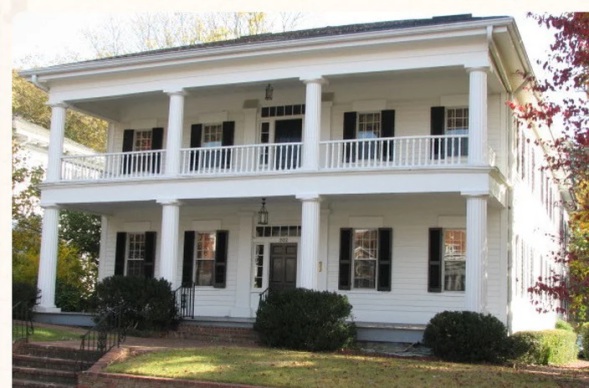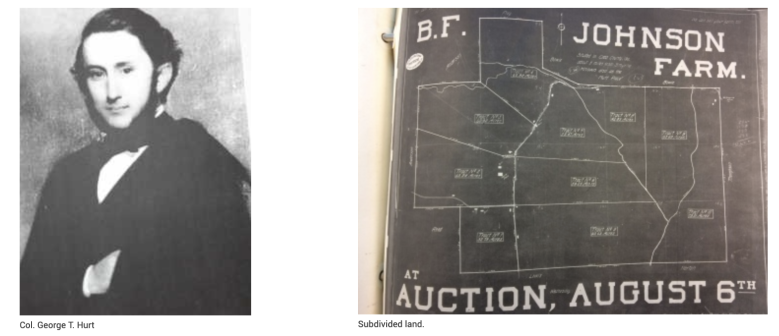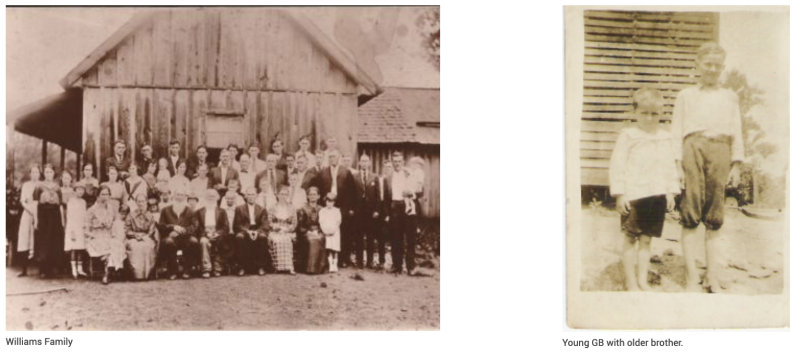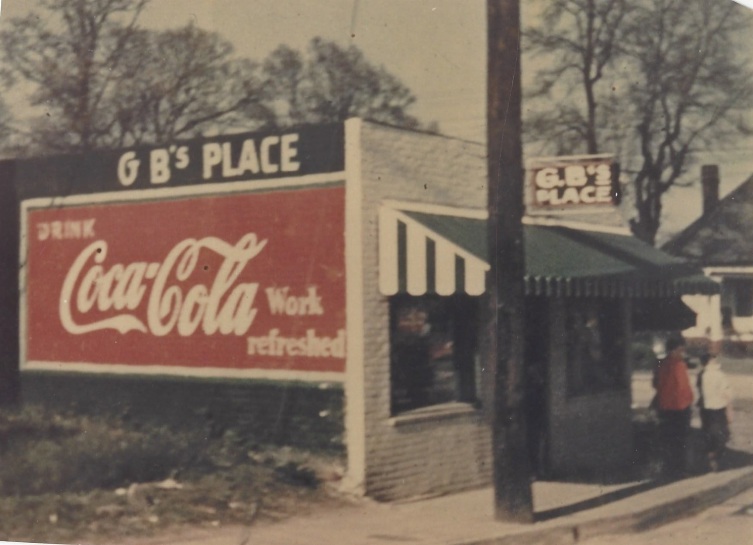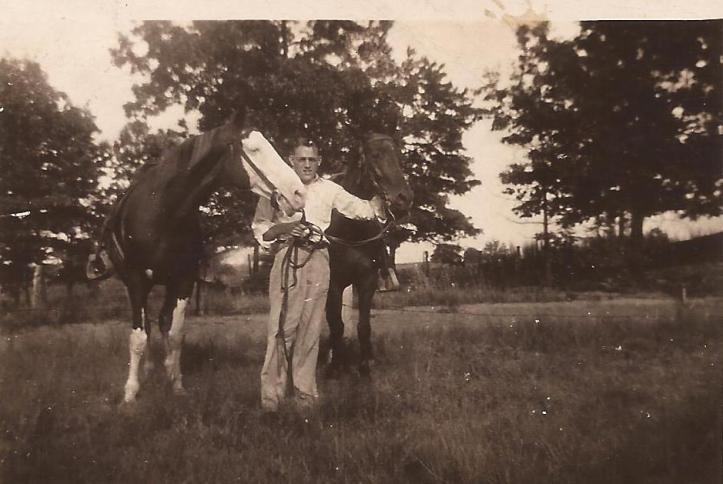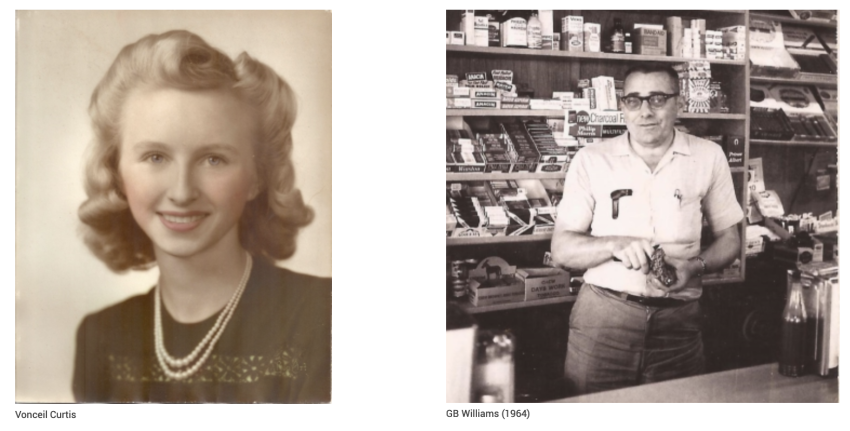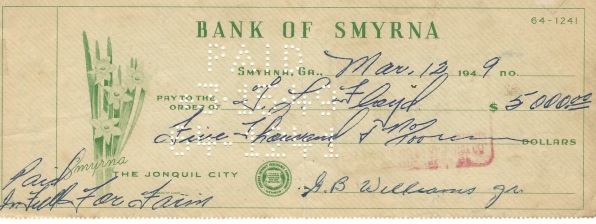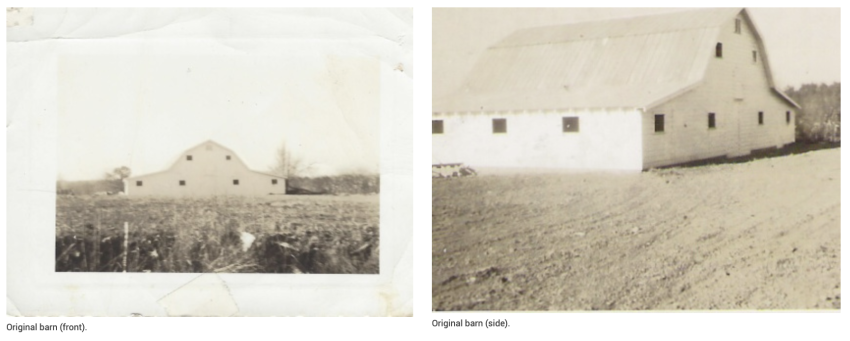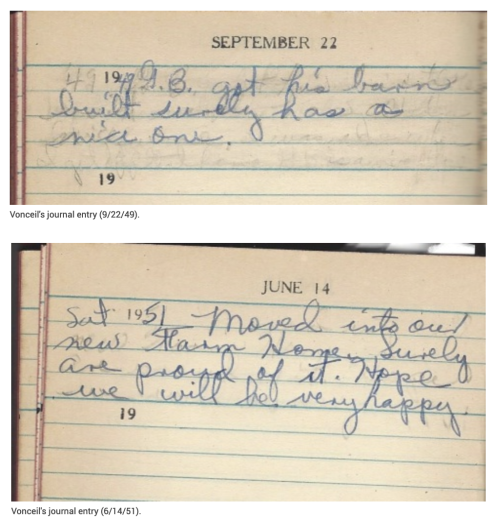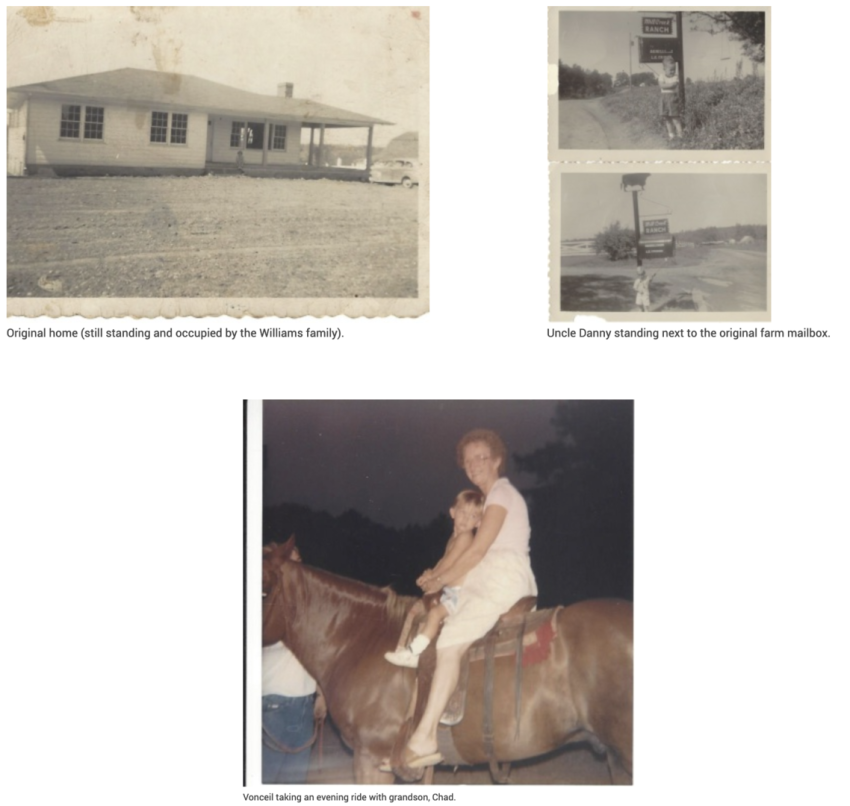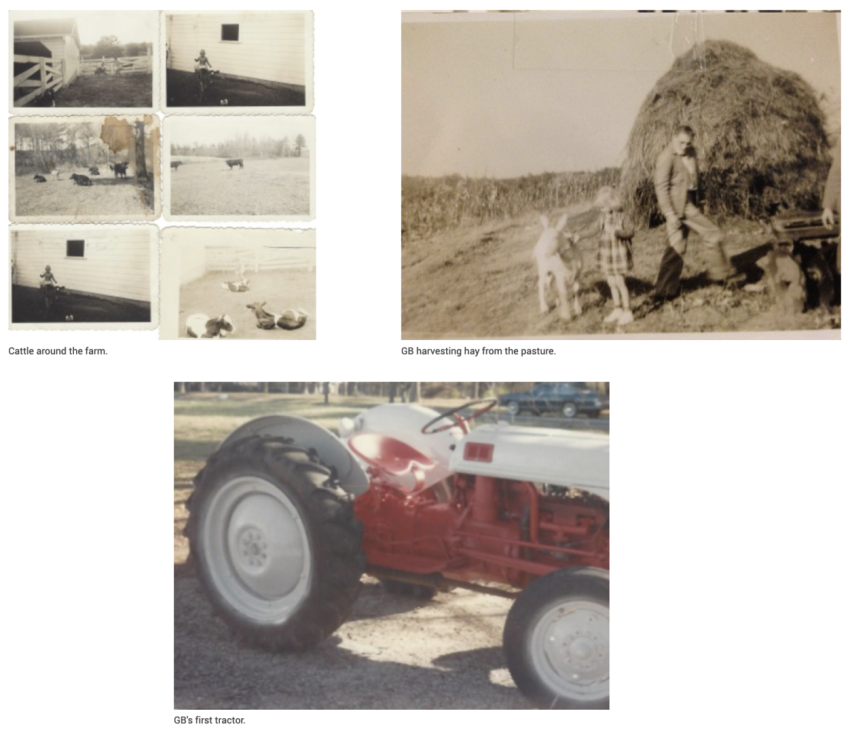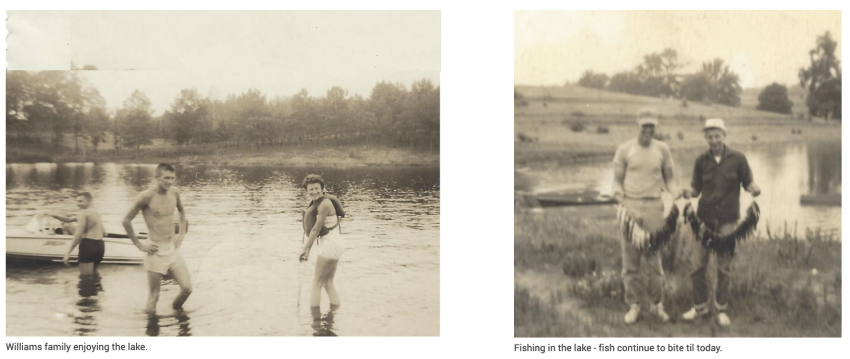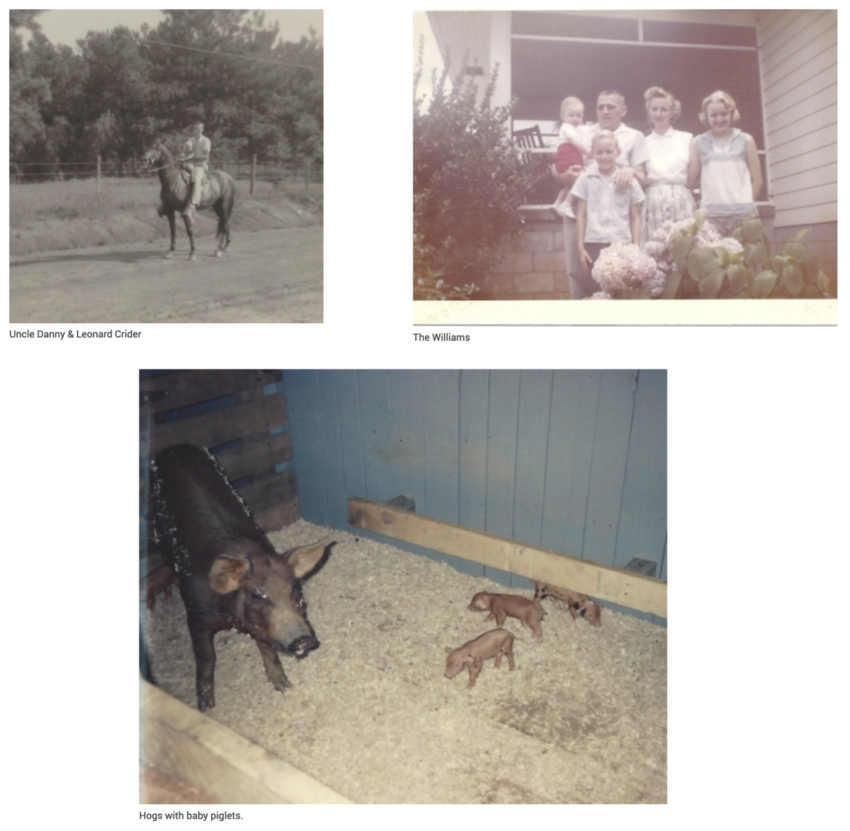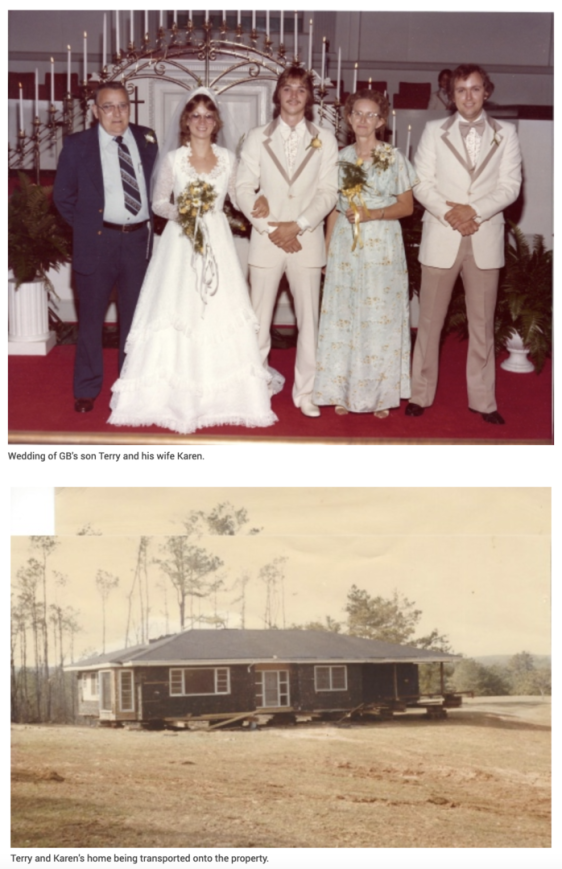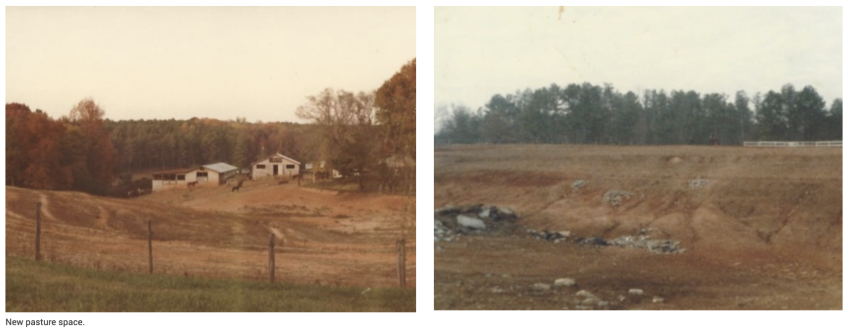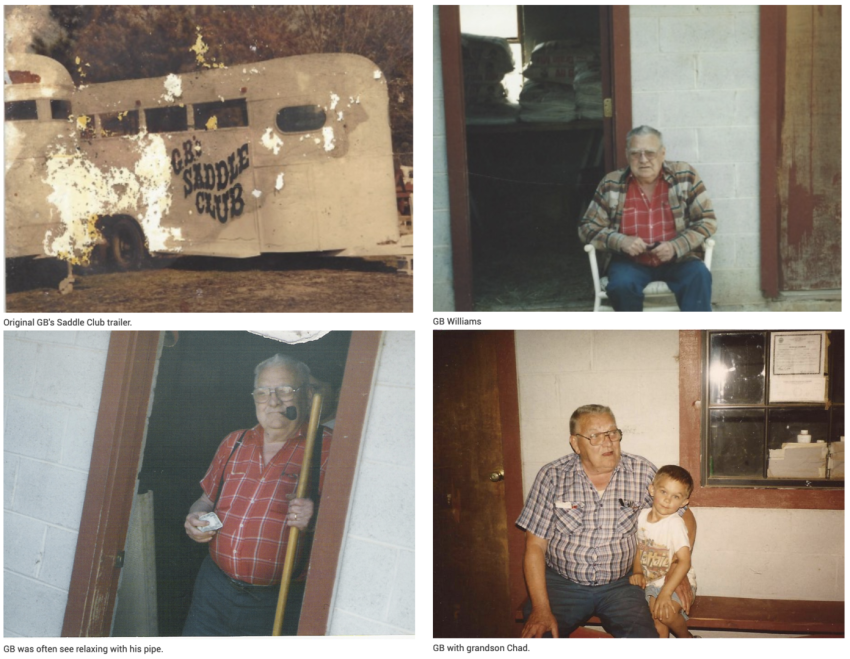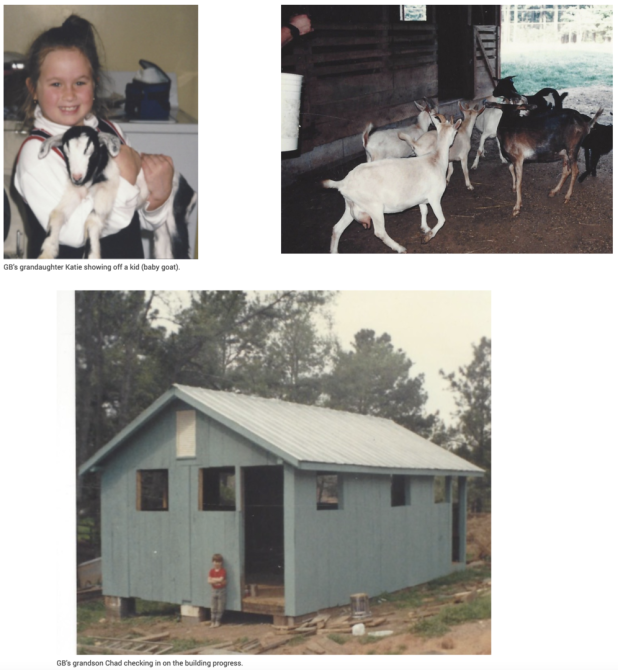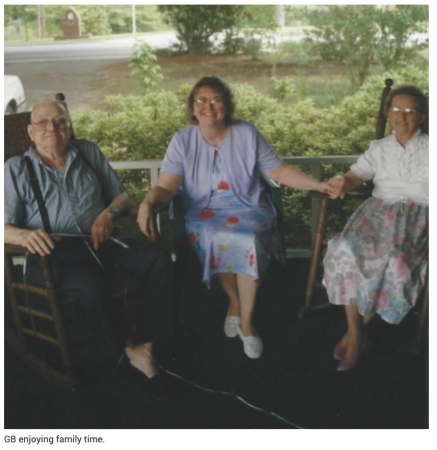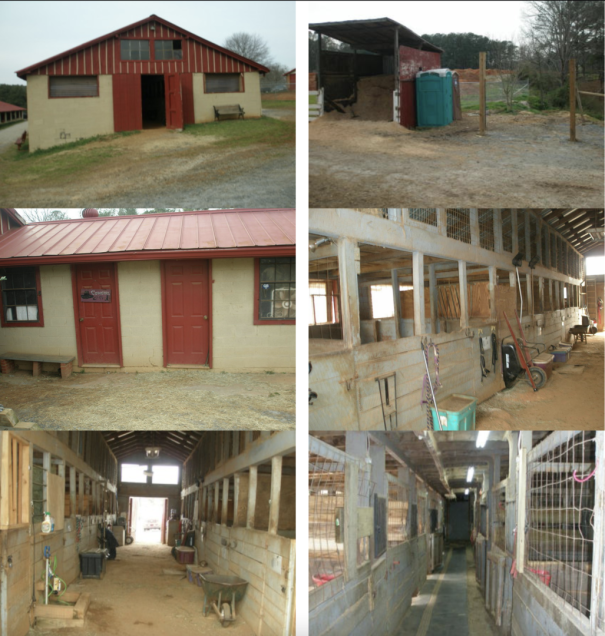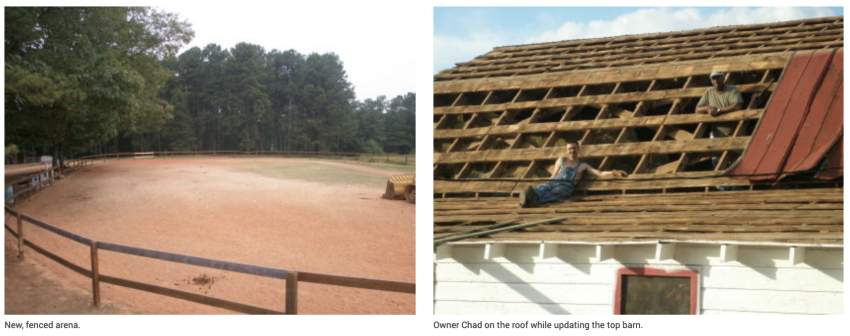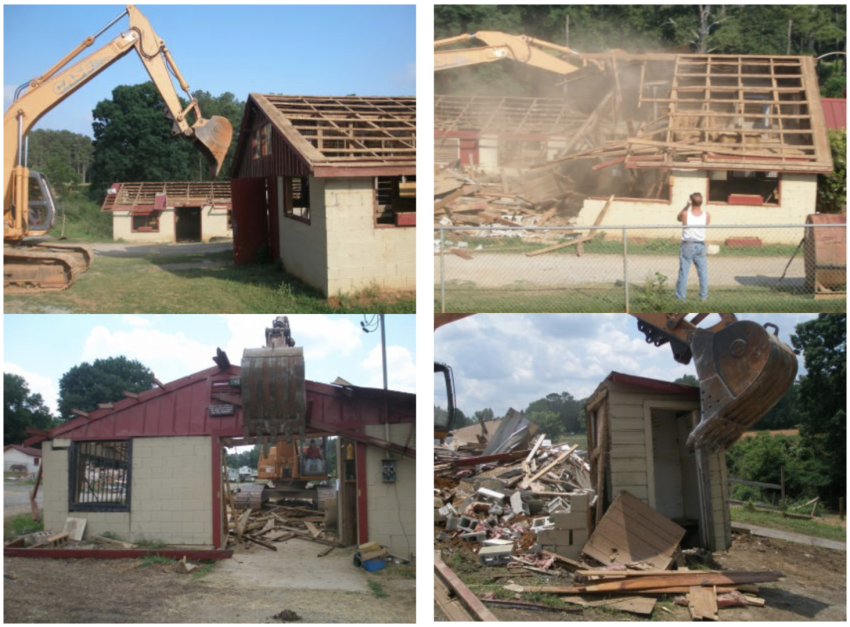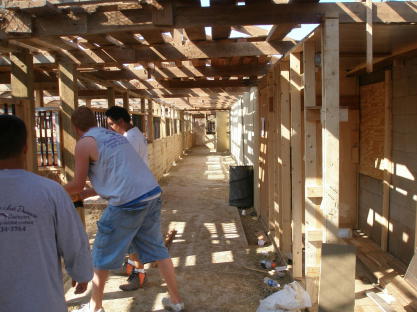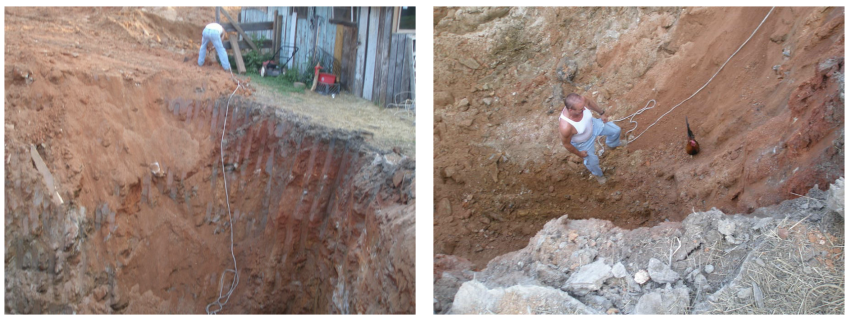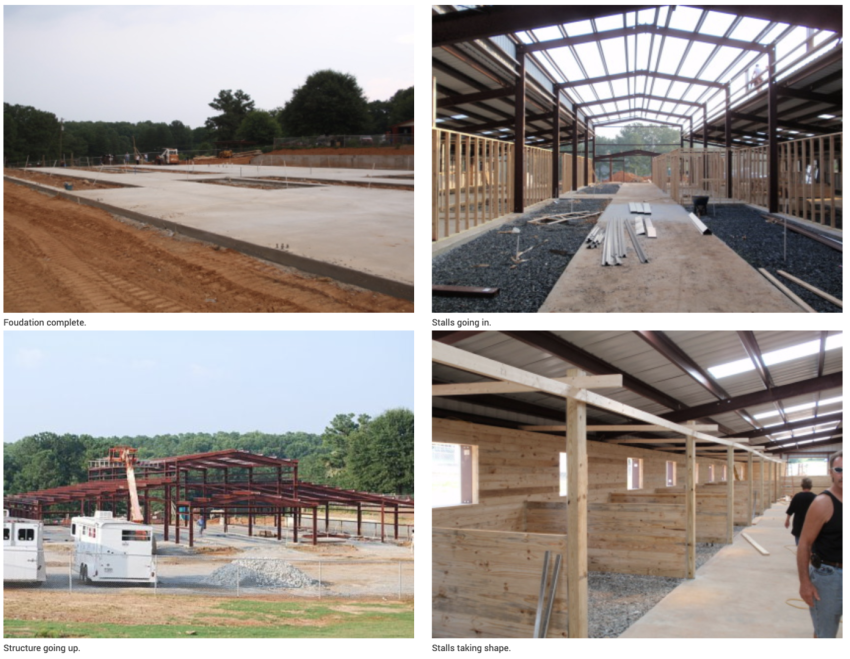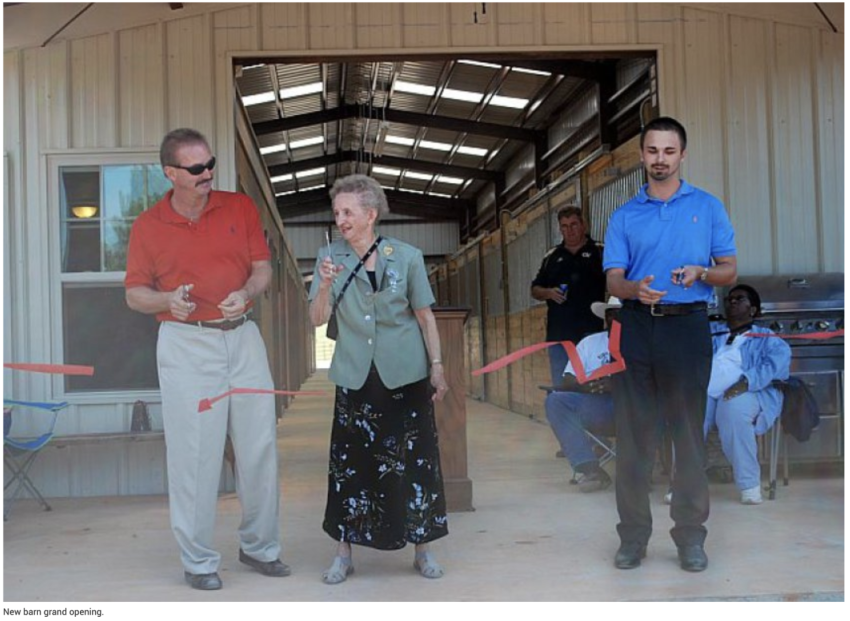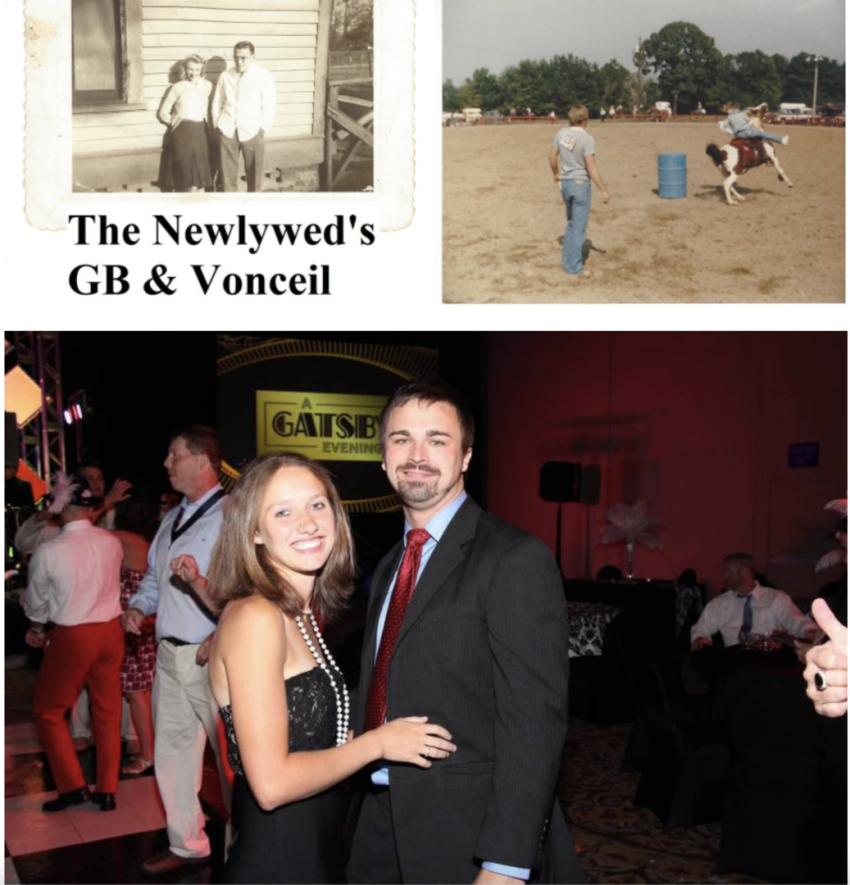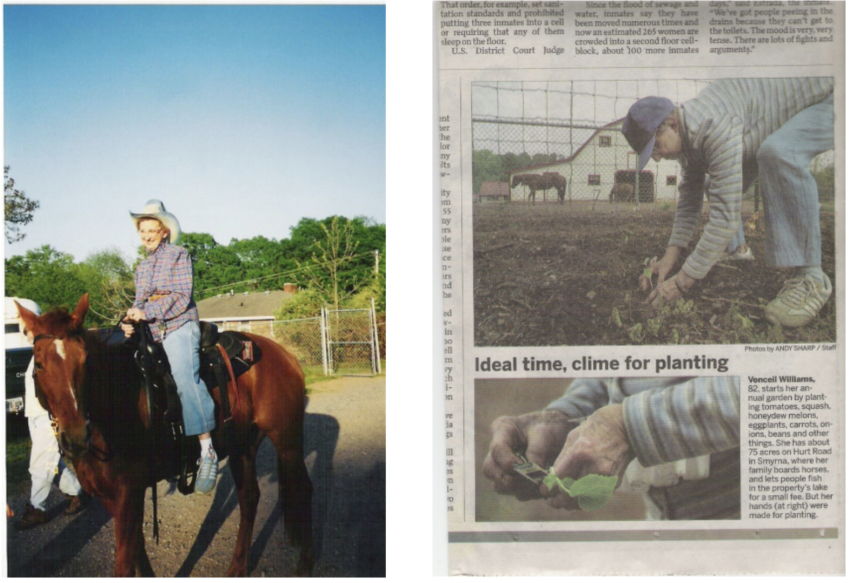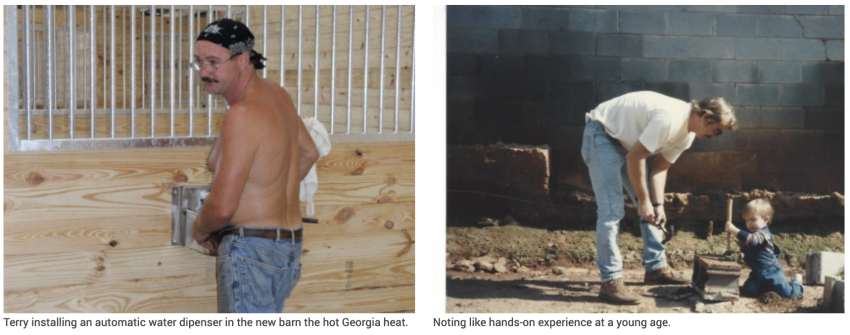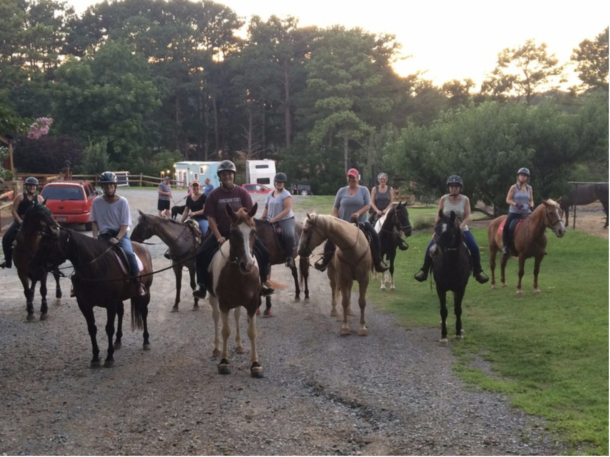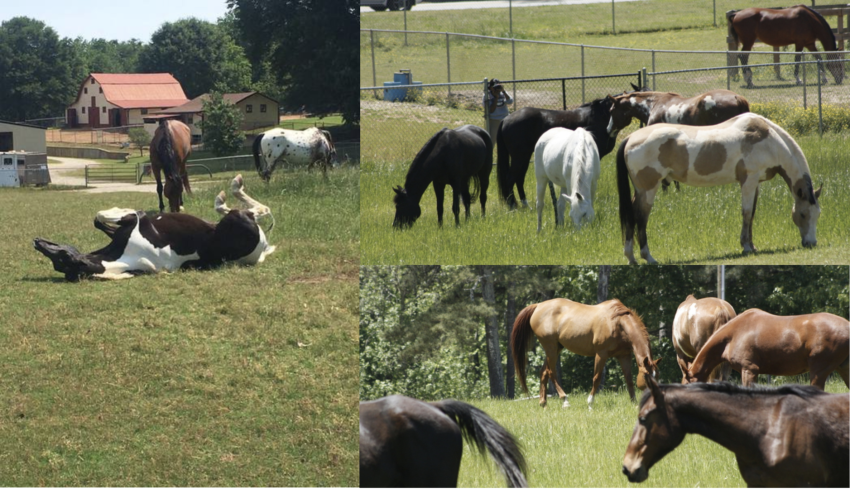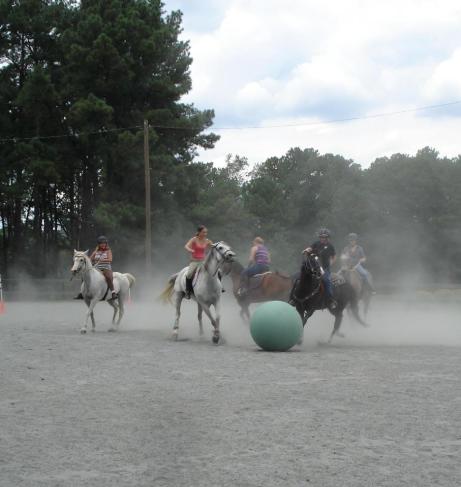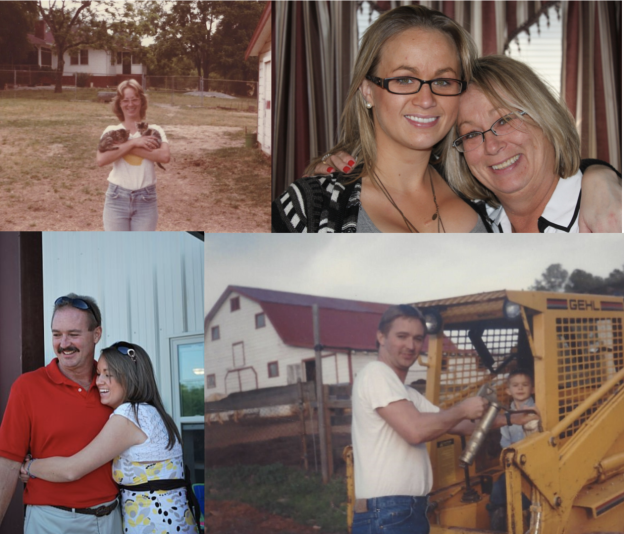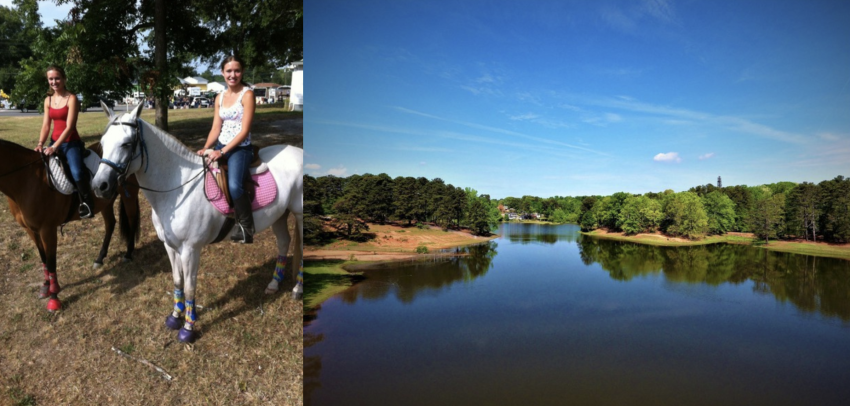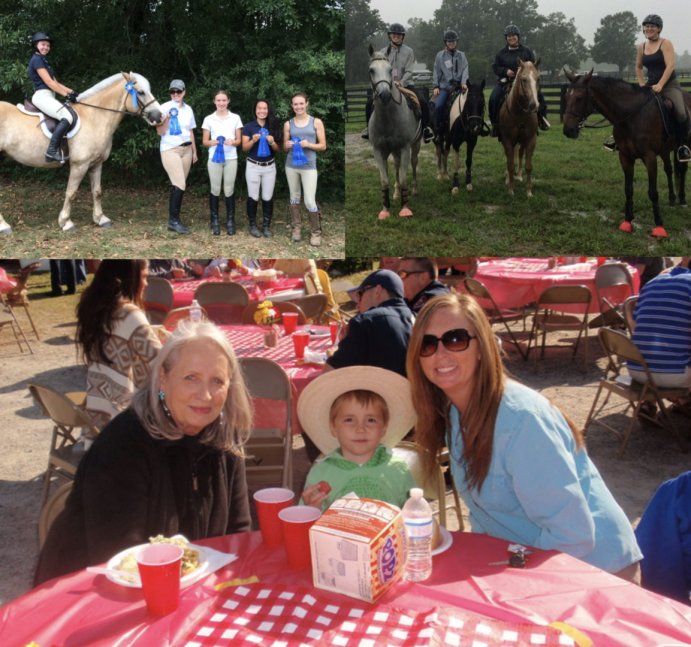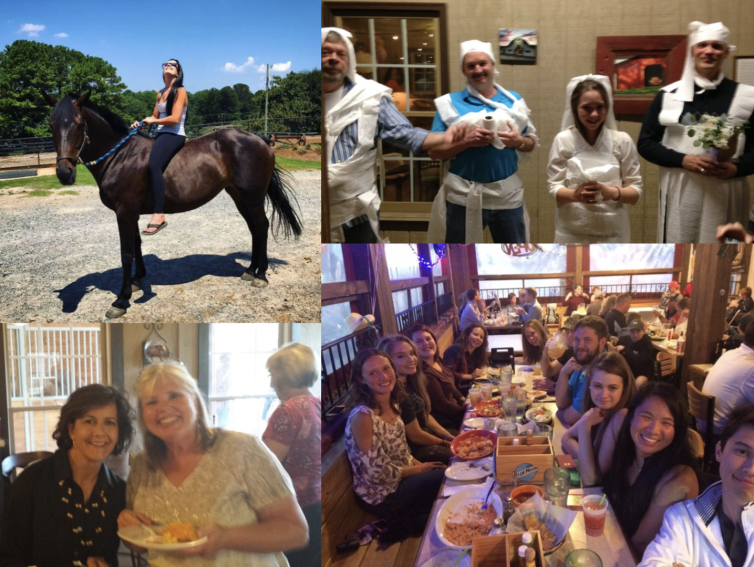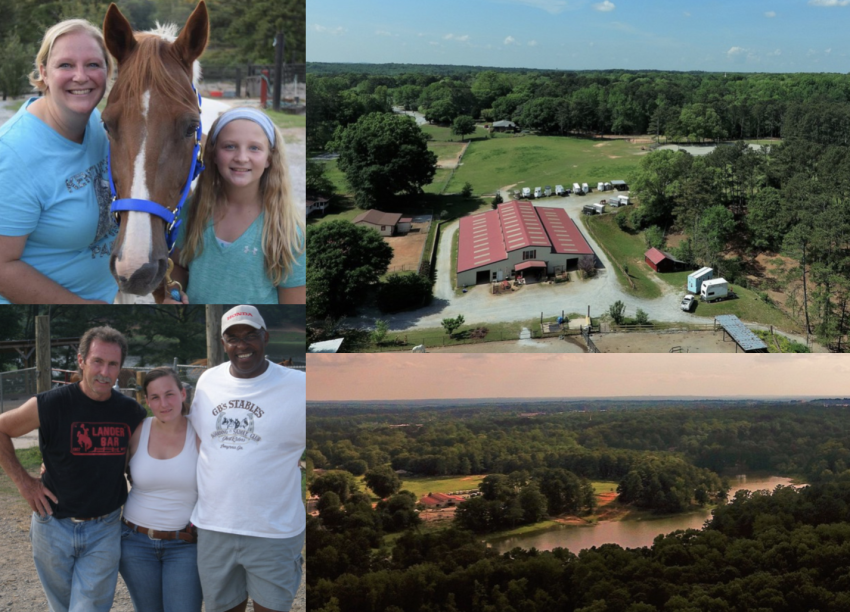This is a history of our family and property. We hope you can see why we so love GB's Stable.
The recorded history of this property goes back to Creek Indian Chief Nickajack who in 1832 had two log cabins and 160 acres that included this property. David Ardis is the first known white owner and likely purchased the 1,100 acre tract that included our property in the 1850’s for a country cotton plantation to coincide with his city home near the Marietta square.
Ardis sold the 1,100 acres in 1863 for twelve thousand seven hundred fifty highly inflated Confederate dollars in the height of the civil war and fled to Alabama, to evade the chaos that ensued with Sherman’s march to the sea. The namesake for our road, cotton broker, Col. George T. Hurt of Atlanta purchased 485 acres of the property in 1876, which already included below our current lake dam a cotton mill, gin house, and mill pond. Hurt and his family were key to the building of Atlanta after the civil war and for a time they practically owned all the land that is now Inman Park. Hurt produced corn, wheat, grapes, peas, beans, and had over 400 apple trees, amongst other items. Through the years the property was sold off and subdivided until the Floyd family owned 121 acres.
This is where the Williams family weaves into the story of the property. GB Williams was born in Cherokee County on September 8, 1917 to an old Southern family whose Georgia roots can be traced back to 1805 and American roots to Jamestown in 1619. The civil war decimated the south. GB had four great uncles who died in the war and most of his family succumbed to the life of poor cotton picking sharecroppers that moved yearly year and never owned any land. The prospects of a better life was thought to be found in Cobb County, so in 1922 he and his parents and seven older siblings all moved here.
Life was tough. GB was determined to make a better life for his family and he knew that he wanted what his father never had and that was a piece of land that he could call his own. In 1935 at 17, GB found that the Floyd farm had work. The Floyd’s “truck farmed” our property. They had terraced the steep hills to led to the creek where the lake now is and grew various vegetables that were “trucked” to the farmer’s market in Atlanta. Field hands earned $0.50 per day, but GB was hired to plow with a mule, so since he was doing what Mr. Floyd called “man’s work” he was paid a $1.00 per day. As time went on GB found other work in Atlanta with the Moncrief furnace company, but still in the midst of the depression, work was slow, so he befriended a man who owned a small hotdog stand and bar and GB helped run the place. GB realized this was something he could do himself, so in 1936 he started his own restaurant in downtown Smyrna with $35 in supplies he begun selling hamburger, hotdogs, and Coca-Cola’s for $0.05 each. He eventually was able to buy the restaurant building for $400 and begin a successful career that turned GB’s Place into the local hangout for 37 years. World War II broke out and Lockheed opened, which led to a huge influx of people and a little bit of spending money in the community.
GB began buying horses, which at that time were still used for plowing and as a leisurely pastime since there was no traffic and you could easily keep the horses in your own backyard in downtown Smyrna. Horses are what led GB to my grandmother.
Vonceil Curtis’s aunt arranged a horse riding date for the two of them, which involved riding down what would become Cobb parkway and later the dirt road we know as South Cobb drive. Vonceil fell in love with his horses and we must presume him as well because one month later they were engaged and in another month married. During their 59 year marriage there was never a time horses were not a part of them. In fact after GB bought a 10 acre farm near downtown Smyrna he really got into horse trading and one night went to an auction and bought a horse he liked, but then he saw another that he liked, and another, and before you knew it he had bought 16 horses. When asked what my Grandmother did being awakened in the middle of the night at the sound of horse trailers barreling down the driveway, “she just started grabbing halters.”
The post war boom brought much growth to Smyrna, so GB found ways to expand. GB worked to keep as many irons in the fire as possible, by selling groceries in his restaurant, helping start the first bank in Smyrna, building a rental house a year, owning a gas station, and investing in railroads and timber.
Throughout all of this though his mind always went back to having a farm. His former boss at the Smyrna farm, Tommy Floyd would come in the restaurant and at one point said he was going to sell it. He wanted $6,000 for his 72 acres, but Grandfather could only pay him $5,000. A year later Mr. Floyd told GB that he hadn’t gotten any other offers and would let him have it for $5,000. So on Mar 12, 1949, GB wrote a check that he put in the memo, “Paid in full for farm.”
And he went right to work getting things ready. He tore down the old three room farm house and used the lumber to build the garage that still is there today and a small chicken house. Then he built the top barn.
Grandmother’s journal entry of September 22, 1949 read, “GB got his barn built surely has a nice one.” It was nearly a year and half before her journal read on Jun 14, 1951, “Moved into our new farm home surely are proud of it. Hope we will be very happy.”
She hoped they would be happy, but in fact Grandmother was not happy. They lived on a dirt road with three houses between here and Concord Road. They had a well and a party line telephone that they shared with eight others and on Saturday two old widow women would gab all afternoon clogging the line.
The school bus would get stuck in the mud along the curve and at night when GB was at the restaurant and my aunt and uncle were put to bed, she’d pin the curtains shut because she said it was so dark and scary. Times quickly changed.
GB immediately went to work starting a cattle ranch that was grow to 60 head of Black Angus. He fenced off the area that had been corn fields and transformed it into a cattle pasture and hay fields. He began raising up to 900 hogs in pastures (now woodlands on the north side of the lake). He bought a 1952 Ford 8-N tractor that allowed him “to set the woods a fire” working late at night.
In 1955 GB built the lake, which would open the door for recreational fishing to the community. With the growth of metro Atlanta, the need for food increased, so GB constructed a large scale chicken house, which housed up to 6,000 chickens that produced up to 18,000 eggs per day.
The family grew and their love for horses continued. By the mid 1970’s GB was ready to retire from the restaurant business and thought he was likely closing the most productive chapter of his life. He also was winding down the hog and chicken businesses.
Then a lady asked if she could keep her horses here. GB had no desire to board horses, but had always loves horses, so he gave it a try. He told her she could have the entire chicken house for $50 per month. Soon after word spread and GB and my Dad had to retro fit the chicken house and in 1985 built another barn to accommodate the horses. They started charging the exuberant rate of $25 per stall, selling hay for $.50 a bale and grain for $3 per bag (you had one option, 10% sweet feet, though later as time went on you could get 12%, pellet, and rice bran).
In 1979 when my parents got married they had their house moved in three pieces from its original location on Cobb Parkway, paving the way for Dad to move next-door.
In 1985 over 10,000 loads of dirt were hauled in to fill in the pit that is where the pasture is. Throughout the 1980’s and 1990’s, GB’s Stable, became known throughout the community as a place to keep your horse and enjoy a more relaxed life in suburbia.
My parents and some of you here helped create the GB’s Saddle club, and hosted many great shows and parties. As GB got older he found that the barn was his happy spot. He would drive, yes drive from the white house in his 1972 Chevrolet pick-up truck to the entrance of the old middle barn each day and find him a spot on a bench or chair and smoke his pipe while boarders and friends came through to, “shoot the breeze.”
With the diversity of the community increasing, GB’s became the place to get goats for the Caribbean and African community. That was the original purpose of the red building in the mare paddock and the red hay building below was built for Dad to have hogs again.
GB died in 2002 at the home he had built on the property, but was able to own, accomplishing what he set out to do as a young man.
In the years following Grandfather’s death, I saw the aging structures and fencing on the property was going to be a full time job to keep up. We initially began working to replace the fencing, which was nearly 100% barbed wire. Barbed wire works great for cattle and hogs, but not so much for horses. (Original structures and barn below.)
We rebuilt the riding arena and lunging pen, replaced the top barn roof, redid some of the stalls, and after the arrival of Ernie Drinnon even concreted (his) barn hallway. We worked extensively with the guidance of the Natural Resources Conservation Services department of the USDA to install paddock waterers, erosion control, better drainage, more paddocks, and better fencing. We made great improvements, but we were putting lipstick on a pig. As you can see the old chicken house had low ceilings with narrow halls, tiny tack rooms, and wire windows.
We wanted to distinguish ourselves from the other barns in the area. Around a campfire at Cobbtown in 2007 I mentioned to some of others it would be nice to have a new barn. It was a leap of faith not only for our family, but for our boarders because I remember the evening we sat everyone down in the barnyard without them knowing what we were meeting about (were we selling the farm, was rent going up, what was happening?) and showing them the drawings and saying, “Here is what we want to do for you, but the catch is your horses will not have a barn for quite a few months, you will not have a place to store tack, and all the horses must be fed at the same time in the paddock. It was so exciting answering the questions and seeing the excitement from everyone. Donna Abrams remember she had only been here for one month and had left a barn where she had a roof over her horse’s head. We distributed the drawing and asked everyone to pick their top three choices for stalls. Immediately everyone was getting together and saying “I want this stall, let’s get this tack room, do you want to keep your horse next to mine.” It was like a land lottery and everyone picked quickly. And that is just what he got. That evening everyone was so happy, the women were ecstatic that we would actually have indoor bathrooms with running water and everyone was thrilled that you didn’t have to go to a separate building in the rain to get to the shavings. The demo occurred on June 1, 2008 and as you can see it went quick. And yes, that is Ernie and his crew getting items off their stall while the wrecking ball headed down the hall.
Slight explanation here, a chicken fell into a hole where they were going to bury the contents of the old barn and Dad ever having a soft heart for poultry winched his way down the hole to get it out.
When it came to the building of the barn we were really lucky because we were in the midst of a drought, so we only lost two working days due to rain, which meant we had the new barn opened September 7th and horses were only out for 3 months.
As you can see with my family, horses have always been a huge core part of our life. As I mentioned my grandparents met on a horse riding date, my parents met at Hancock Fabric in 1975 and when my mom found out my dad had horses it was all over, Jenna’s parents met at the old Head’s horse stable where they had horses, and then of course Mrs. Williams and I bumped into each other one day in the summer of 2010 and well the rest is history. The moral of this story for the Williams men is we know the horses are first and we better love them are we are up the creek without a “saddle.”
Grandmother Williams remained with us until 2011, sharing the fabulous vegetables from her garden, her love for the Lord, and her revolving array of trinket gifts that let you know that you were loved and she was glad you were part of the GB’s family. She like my Grandfather never paid any attention to the endless flow of solicitations by developers. You wonder at the end when all of the other farms in the area succumbed to the dollar signs flashed by developers why they never sold, but for them it was home, and for GB he never wanted any money, he just wanted, “a little bit of land.”
It is also very important to say that were it not for the blood and sweat of my Dad there is no way any of us would be able to be here today. This man made GB’s run and without him none of this would have been possible.
In 2012 we were able to repurchase 18 acres that had been sold off the original plantation in 1867 providing us additional trails and preventing future development. Whether it was the arena lights, improved footing and dragging equipment for the arena, safe fencing, additional and mudless paddocks with improved drainage, new trees that will one day provide great shade for generations of horses, or my downright obsession with eradicating the pasture bitter weed we kept working to make it better for you.
We had our best pasture this year thanks to the improvements in fertilization, weed killer, seeding, and Mother Nature’s rain and we’re getting ready for the winter pasture. As we have evolved so has the access to incredible vets, farriers, diverse trainers, clinics, and fun events.
It excites me that this is still a family business. My mom and dad are here a lot of evenings, my mom does all the planting and flowering along with the help of my Aunt Cherri. Kadie fills in and helps with the lounge when my mom isn’t able to, Dad can fix just about everything, and Jenna and Jamie are here taking care of your horses each day.
Jenna brings so much joy to children who otherwise would never get to experience a horse, and she is my source of wisdom and the calming force, and of course Danny keeps the lake going year after year and even helps ensure that the farm side of the property remains by helping Caitlee’s mom with her chickens. Then you look beyond and think about all that the Huerta family does for it, and again all the things that each of you do that I don’t even know about.
The sole purpose of GB’s stable, has been, is, and forever more will be to provide a happy and healthy place for people and their horses. You don’t need a gym to exercise at, you don’t need a therapist to unwind to, you don’t need Facebook to find friends, you have 110 acres of God’s beautiful earth here to share and enjoy with your Equine loved one, and some of the best friends you could ever encounter.
Some of you have been married here, many of you have your birthday party here, and we’ve seen when times have gotten tough and members of the barn family have gotten sick or lost loved ones and the barn had bound together and made them know they are loved. I love the diversity of the people and the styles of riding here. We have always prided the fact that we have a great group of people at GB’s.
We have an ever improving facility, with healthy horses that are loved endlessly by their owners and devotedly cared for by an incredible staff and management. Ernie Drinnon’s sign and motto for GB’s is so true, “Home to Friends and Family.” GB’s stable wouldn’t be possible were it not for many people and we hope you understand why we are so proud to serve the Equestrian community here and honestly say we truly believe that the best is yet to come.
Though Cobb County has moved from the Indian lands of Chief Nickajack and even the rural farmland of years gone by to a 700,000 person busy suburbia, this property remains, changed, yet unchanged by time. This is our home, you are our family, and we will always be blessed as a result of GB’s Stable.
- Chad Williams


